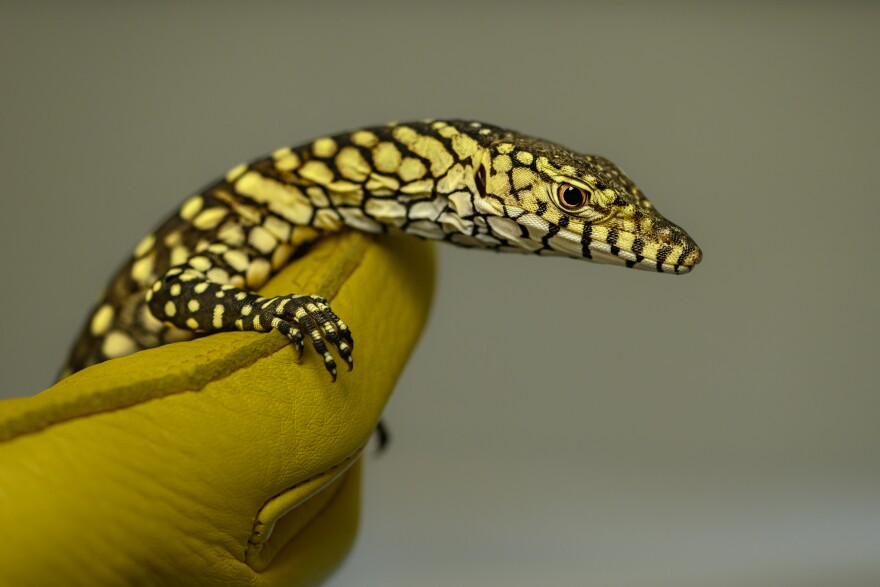With our free press under threat and federal funding for public media gone, your support matters more than ever. Help keep the LAist newsroom strong, become a monthly member or increase your support today.
Look at those baby lizards! LA Zoo welcomes perentie hatchlings

The Los Angeles Zoo is celebrating a first — it successfully hatched a pair of healthy perentie lizards.
The long-necked lizards are among the world’s largest, reaching more than 8 feet long and growing to over 40 pounds.
Byron Wusstig, L.A. Zoo acting curator of ectotherms, told LAist the babies are doing well and looking beautiful, with their cream-colored spots contrasting against their dark brown kin.
“ They're one of the most gorgeous lizards out there, and they're unique,” he said. “They are truly the apex predators in their region.”
While the hatchlings aren’t on display at the zoo, you can find the father in the Australia section — next to the Komodo dragon habitat.
Perenties don’t need much parenting
The lizards are pretty self-sufficient right out of the egg, but in a zoo setting, there’s a little more work involved.
“ We serve some role, and we obviously provide the food and set up the environment and monitor the habitat and all that,” Wusstig said.
The two perenties emerged in November from eggs that are about the size of a mandarin orange. They spent six months absorbing its yolky nutrients, so it takes about a week after hatching for their appetite to kick in. The duo are eating well, with meals including mice or crickets.
We don’t know the sex of the perenties just yet, and they’re still relatively small for the species. But once they’re mature, they have no natural predators, Wusstig noted.
“ The males are quite a bit larger — longer, bulkier, wider heads — but they both have the same type of color and pattern,” he said.
What this means for the zoo
This is the first time the L.A. Zoo has bred the species, and it’s one of three accredited institutions that have successfully reproduced them.

Perenties aren’t endangered in Australia, but they’re rarely seen in zoo settings outside the continent.
There’s a lot of planning involved with breeding the lizards, including finding compatible parents, which zoo officials have to pay close attention to.
“It's very unusual and atypical for how the animals move around in normal terms, but when a male's in the mood, they have this very unique and distinctive movement,” he said.
The pair of perenties won’t be on display for the foreseeable future, as they need to be raised in a specific, controlled environment that will help them thrive.













